NVIDIA Announces the GeForce RTX 20 Series: RTX 2080 Ti & 2080 on Sept. 20th, RTX 2070 in October
by Ryan Smith on August 20, 2018 4:00 PM ESTGeForce RTX 2080
Moving down the stack, we have the GeForce RTX 2080. Normally the king of an NVIDIA launch product stack, this cycle’s x80 card is instead playing second-seat to the RTX 2080 Ti. However in terms of pricing and the general market position, it remains in a similar position.
| NVIDIA GeForce x80 Specification Comparison | ||||||
| RTX 2080 Founder's Edition |
RTX 2080 | GTX 1080 | GTX 980 | |||
| CUDA Cores | 2944 | 2944 | 2560 | 2048 | ||
| ROPs | 64? | 64? | 64 | 64 | ||
| Core Clock | 1515MHz | 1515MHz | 1607MHz | 1126MHz | ||
| Boost Clock | 1800MHz | 1710MHz | 1733MHz | 1216MHz | ||
| Memory Clock | 14Gbps GDDR6 | 14Gbps GDDR6 | 10Gbps GDDR5X | 7Gbps GDDR5 | ||
| Memory Bus Width | 256-bit | 256-bit | 256-bit | 256-bit | ||
| VRAM | 8GB | 8GB | 8GB | 4GB | ||
| Single Precision Perf. | 10.6 TFLOPs | 10.1 TFLOPs | 8.9 TFLOPs | 5.0 TFLOPs | ||
| "RTX-OPS" | 60T | 60T | N/A | N/A | ||
| TDP | 225W | 215W | 180W | 165W | ||
| GPU | Unknown Turing | Unknown Turing | GP104 | GM204 | ||
| Architecture | Turing | Turing | Pascal | Maxwell | ||
| Manufacturing Process | TSMC 12nm "FFN" | TSMC 12nm "FFN" | TSMC 16nm | TSMC 28nm | ||
| Launch Date | 09/20/2018 | 09/20/2018 | 05/27/2016 | 09/18/2014 | ||
| Launch Price | $799 | $699 | MSRP: $599 Founders $699 |
$549 | ||
NVIDIA has not disclosed anything about the GPU used here. As I highly doubt it’s using Big Turing, I expect we’re looking at the next Turing down, which would presumably be TU104. And although we don’t have die size or transistor counts, in terms of functionality it appears to be a straight smaller version of Big Turing, featuring a proportional number of CUDA, tensor, and RT cores.
Altogether we’re looking at 2944 CUDA cores paired with what should be 368 tensor cores. I expect that like the RTX 2080 Ti, for the RTX 2080 what we’re looking at is not a fully-enabled TR104 part, especially as the similar Quadro RTX 5000 has slightly better specifications. Also like the RTX 1080 Ti, clockspeeds have dropped a bit from generation to generation, as the base clock is down to 1515MHz and the boost clock to 1710MHz. All told we’re looking at a pure CUDA core compute throughput of 10.1 TFLOPs, about 13% higher than the GTX 1080. Or if we compare it to the RTX 2080 Ti, we’d see around 75% of the expected compute/tensor performance, which is only a bit larger than the jump we saw between the GTX 1080 and GTX 1080 Ti.
Meanwhile it’s clear that the card will come with a fully enabled memory bus, meaning we’re looking at 8GB of GDDR6 running at 14Gbps, on top of a 256-bit memory bus. Relative to the GTX 1080 this is an even more significant 40% increase in memory bandwidth.
As for TDPs, they’ve gone up for this band of cards. The stock RTX 2080 will have a 215W TDP, up 30W from the GTX 1080’s 180W TDP, and an even bigger increase if we look at GTX 980’s 165W TDP. It’s no secret that NVIDIA is fighting a losing battle with Moore’s Law here, and barring massive efficiency improvements, there is a need to increase TDPs to keep up overall performance. TU104 is undoubtedly also a big chip, and without a full node shrink, it would seem that NVIDIA has to pay a power penalty instead. In the meantime this higher TDP also negates some of the RTX 2080 Ti’s power disadvantage, as now that gap is just 35W instead of 65W.
Past that, NVIDIA is offering an overclocked Founders Edition card here as they are with the RTX 2080 Ti. The RTX 2080 Founders Edition will ship with an 1800MHz boost clock (up 5%), and the TDP will be 10W higher at 225W.
Power delivery for the 2080 FE and similar reference cards will be a 6pin + 8pin configuration, which on paper is good for 300W. NVIDIA's official PCB photo for the card shows a similar VRM configuration as the 2080 Ti, so that means we're looking at what appears to be 10 phases driving the GPU among 13 phases in total. NVIDIA has also disclosed that the RTX 2080 Founders Edition in particular has an overclocking power limit of 280W, confirming earlier claims about being more overclocking-friendly than past reference designs.
The Founders Edition card will also retain the same dual fan reference cooling design as its bigger sibling, right down to its 10.5-inch long physical dimensions. This also includes the card-length vapor chamber that's used on the RTX 2080 Ti as well. So the only difference between the two cards, other than the power connectors, will be on the inside. Which also means that NVIDIA’s 2080 reference PCB will use the same 3x DisplayPort + 1x HDMI + 1x USB Type-C configuration as the other card.
Finally, in terms of pricing, the RTX 2080 will also be seeing a price hike over the last generation. Though not as significantly as the RTX 2080 Ti. The MSRP for a stock card will be $699, $100 over the launch price of the GTX 1080 and $200 over its current list price. Meanwhile the Founders Edition card will carry a further $100 premium, pushing it to $799. Finally, like the RTX 2080 Ti, the 2080 will be shipping in the first wave of cards on September 20th.
GeForce RTX 2070
The final member of the new GeForce RTX family is the GeForce RTX 2070. Traditional for its roots, this is the “value” enthusiast card, giving up some of the RTX 2080’s performance in exchange for a lower price. Though with prices starting at $499, “value” and “cheap” are not the same thing.
| NVIDIA GeForce x70 Specification Comparison | ||||||
| RTX 2070 Founder's Edition |
RTX 2070 | GTX 1070 | GTX 970 | |||
| CUDA Cores | 2304 | 2304 | 1920 | 1664 | ||
| ROPs | 64? | 64? | 64 | 64 | ||
| Core Clock | 1410MHz | 1410MHz | 1506MHz | 1050MHz | ||
| Boost Clock | 1710MHz | 1620MHz | 1683MHz | 1178MHz | ||
| Memory Clock | 14Gbps GDDR6 | 14Gbps GDDR6 | 8Gbps GDDR5 | 7Gbps GDDR5 | ||
| Memory Bus Width | 256-bit | 256-bit | 256-bit | 256-bit | ||
| VRAM | 8GB | 8GB | 8GB | 4GB | ||
| Single Precision Perf. | 7.9 TFLOPs | 7.5 TFLOPs | 6.5 TFLOPs | 3.9 TFLOPs | ||
| "RTX-OPS" | 45T | 45T | N/A | N/A | ||
| TDP | 185W | 175W | 150W | 145W | ||
| GPU | Unknown Turing | Unknown Turing | GP104 | GM204 | ||
| Architecture | Turing | Turing | Pascal | Maxwell | ||
| Manufacturing Process | TSMC 12nm "FFN" | TSMC 12nm "FFN" | TSMC 16nm | TSMC 28nm | ||
| Launch Date | 09/20/2018 | 09/20/2018 | 06/10/2016 | 09/18/2014 | ||
| Launch Price | $599 | $499 | MSRP: $379 Founders $449 |
$329 | ||
Like the 2080, we don’t know the specific GPU being used here. But it’s almost certainly a somewhat significantly cut-down TU104. NVIDIA has shaved off several SMs here, resulting in 2304 CUDA cores and what should be 288 tensor cores. Meanwhile ray tracing performance is rated at 6 GigaRays/second.
Like the other RTX cards, clockspeeds have dropped a bit versus the previous generation; the base clock now starts at 1410MHz, and the boost clock is 1620MHz. On paper then, compute throughput works out to 7.5 TFLOPs, up 15% from GTX 1070. Or if we compare it to the 2080, the 2070 should deliver around 75% of its bigger sibling’s compute performance, which makes the jumps between the 2070, 2080, and 2080 Ti all very symmetrical. This is also an ever so slightly smaller gap than what was between the GTX 1080 and GTX 1070.
Also like the RTX 2080, this appears to be a fully enabled memory configuration. Meaning we’re looking at 8GB of GDDR6 running at 14Gbps, on top of a 256-bit memory bus. Relative to the GTX 1070 this is the single greatest bandwidth increase of all of the RTX cards; the 2070 will enjoy a 75% increase in memory bandwidth over its Pascal predecessor, as the GTX 1070 never did use GDDR5X.
TDPs have gone up here as well. The RTX 2070 is rated for 175W, up from 150W for the GTX 1070, and 145W for the GTX 970. As with the RTX 2080, it looks like NVIDIA is paying for their performance and new features via higher power consumption in lieu of a full node shrink.
Past that, NVIDIA is offering an overclocked Founders Edition card here as well. The RTX 2070 Founders Edition will ship with a 1710MHz boost clock (up 6%), and the TDP will be 10W higher at 185W.
Power delivery for the 2080 FE and similar reference cards will be a single 8pin connector, which on paper is good for 225W. Notably, thanks in part to cutting out a power connector, this card is shorter than the RTX 2080 – as is often the case for x70 cards – and comes in at just 9-inches long. Consequently, while the Founders Edition card retains the same basic industrial design as the other RTX cards, it’s not going to be the same exact shroud, owing to the shorter size and lack of an NVLink connector.
Otherwise in terms of display outputs, NVIDIA’s reference PCB is the same as the other cards: 3x DisplayPort + 1x HDMI + 1x USB Type-C.
Finally, in terms of pricing, like all the other RTX cards, the RTX 2070 will be seeing a price hike over the last generation. The MSRP for a stock card will be $499, $120 over the launch price of the GTX 1070 and around $100 over its current list price. Meanwhile the Founders Edition card will carry a further $100 premium, pushing it to $599.
However unlike the top two cards, the RTX 2070 will not be shipping on September 20th. While NVIDIA has announced the card, both their Founders Edition card as well as partner cards will not be shipping until some point in October. Consequently, pre-orders are not available at this time. Which coincidentally brings us to our final point…
Pre-Orders Starting Now
As mentioned in the introduction to this article, NVIDIA and its board partners are already taking pre-orders on the new GeForce RTX cards. As a general piece of advice, we caution against pre-ordering new hardware until it can be properly reviewed by a reputable third party (i.e. us). However in the case of the GeForce RTX series I feel that this is especially important, as NVIDIA has provided no meaningful guidance when it comes to performance expectations. So we don’t even know how well these cards will perform relative to their Pascal predecessors on current-generation games.
None the less, unless NVIDIA is sitting on a massive launch inventory, I have to admit that I have trouble believing that retailers will remain in stock ahead of the September 20th launch. Launch-day sell-outs have become common for video cards, and even with the unfortunate use of pre-orders here, it wouldn’t be surprising to see pre-orders run out before we reach the 20th. So potential buyers will have some hard choices to make if they want to ensure they have a card on launch day.
Meanwhile as far as pricing is concerned, while NVIDIA does have their $999/$699/$499 baseline MSRPs, the reality is that you won’t be able to find cards at these prices. And likely won’t be able to for weeks or months. The launch-day sell-out phenomena means that board partners have prioritized higher-end card designs, with pricing to match. As of this afternoon, I have not seen an RTX 2080 card listed below $749, and most are at or over the $799 price tag of the Founders Edition card. The gap is even bigger for RTX 2080 Ti cards, where I haven’t seen any for less than $1150. So there’s certainly merit to any arguments that at least for the launch, prices are closer to $1150 and $750 respectively.
None the less, if you are looking to pre-order a card, Newegg, Amazon, and NVIDIA are all taking pre-orders while they last. So at the very least there is a reasonable choice of retailers to choose from. We have not had a chance to dig into any of the board partners’ cards yet, but it would appear that this is going to be a semi-custom launch: that is, everyone is shipping a card using NVIDIA’s reference PCB and then their own custom cooler on top of it. So cooling aside, all of the launch-day cards should offer similar features.


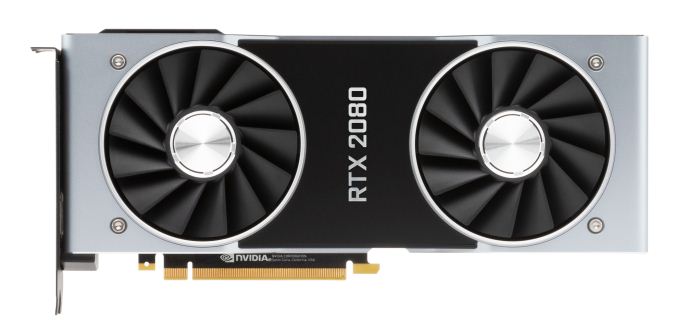
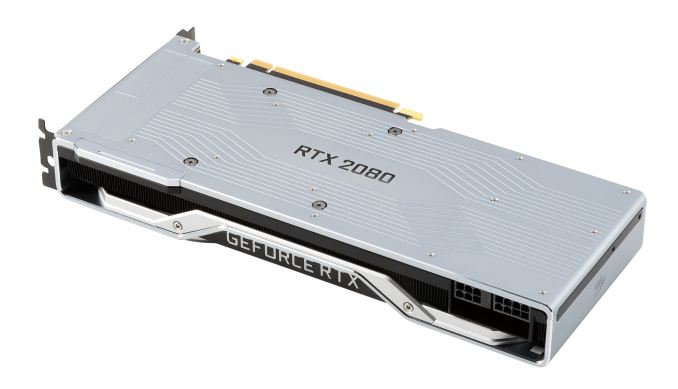
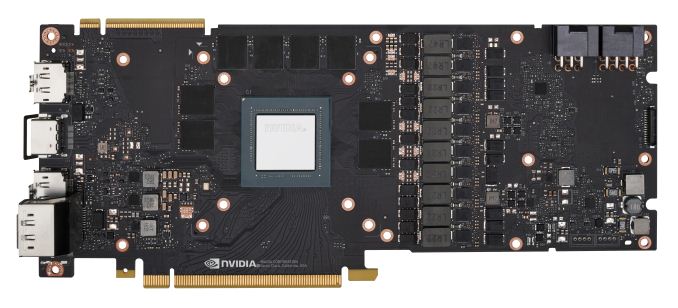
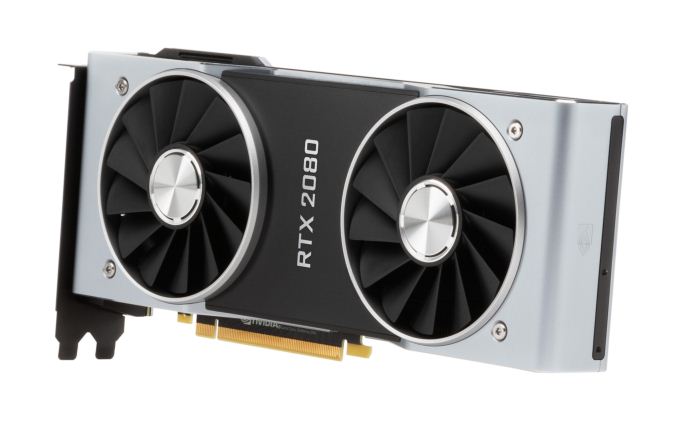
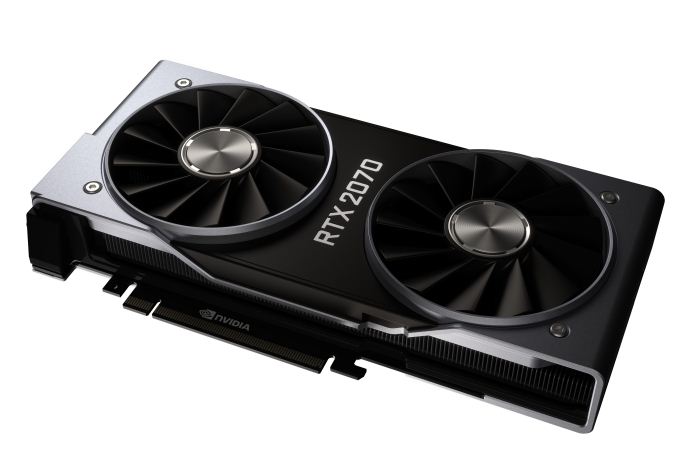
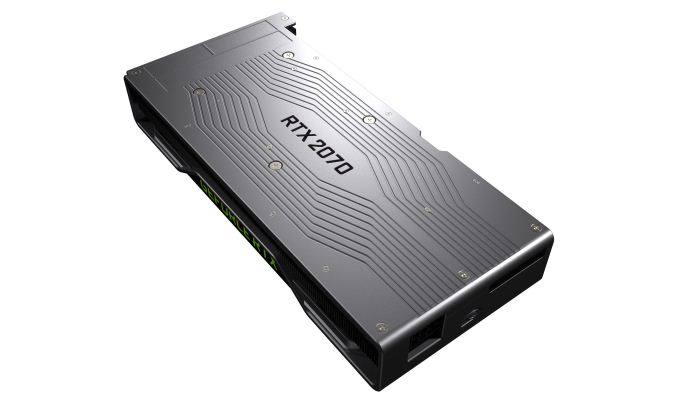
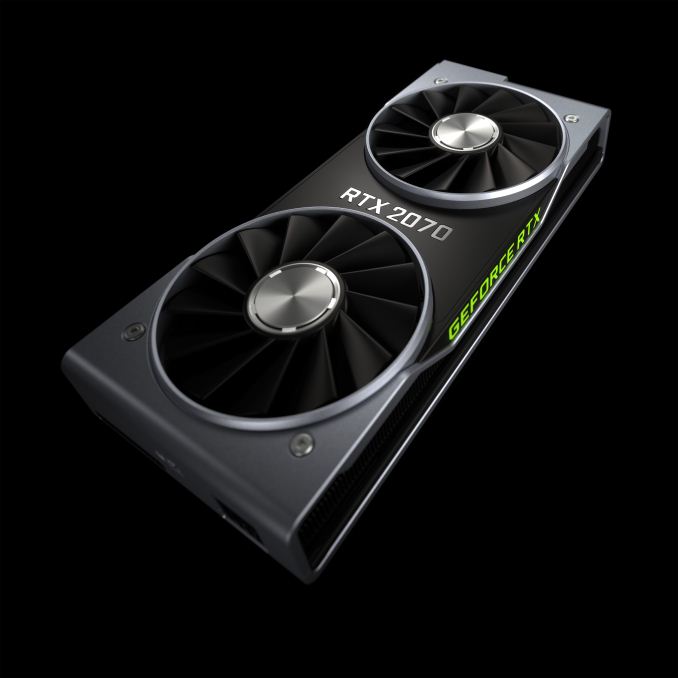








223 Comments
View All Comments
The_Assimilator - Tuesday, August 21, 2018 - link
No, Anandtech, the RTX 2070 Founder's Edition is not $799 as per your page 3. Try proofreading sometime.Ryan Smith - Wednesday, August 22, 2018 - link
Just for that I'm increasing it to $899!Thanks Assimilator!
bogda - Tuesday, August 21, 2018 - link
This looks real bad. We get decrease in core count and clock speed with more features for more money.GTX 1080 is around 400USD last few months and RTX 1070 that has fewer cores and lower clockspeed has MSRP of 500USD.
There are no performance figures in existing games presented so I do not expect much if any impovement in performance but we get increase in price.
AMD get your act together we need some competition in GPU market.
GraXXoR - Tuesday, August 21, 2018 - link
Don't buy it. Nvidia will then be forced to respond.simples.
but yeah, some competition would be nice.
iwod - Tuesday, August 21, 2018 - link
I am now more interested in this "future" Nvidia is painting. Are hybrid rendering really that "good". And at what cost? Are all the features standardise in Direct X? Because at this moment it is looking like Direct X is Glide and Nvidia is 3Dfx ( Which they actually acquired so I cant say this is wrong ). Where does AMD stand in this?Navi was rumoured to be aiming at PS5, hybrid rendering in PS5 as well?
We only have may be ~4x more transistor to go, 7nm brings 2x of 14 / 12nm, and 3nm brings 2x of 7nm density. ( Those naming node are TSMC's version ). Are we sure that is the most transistor efficient way to go?
PeachNCream - Tuesday, August 21, 2018 - link
I'm in general agreement with everyone about the price and I also think the TDP is absurd despite the technology offering impressive features and capabilities. The trouble is that it's you end up paying a lot for PC hardware to simply end up scraping the scraps and leftovers as a second-class gamer scabbing around several months after the fact for poorly ported console games. What's the point of all that supposedly high end PC gear if the software portion of your hobby is treated like the nearly expired discount rack at the console and mobile grocery store?Oxford Guy - Tuesday, August 21, 2018 - link
It's even worse if you're not into bloodbaths and macho nonsense.El Sama - Tuesday, August 21, 2018 - link
ray tracing is a Halo technology, maybe in 5 years some games may have it, currently is useless for gaming. Also lol at Gigarays per second, what a silly unit is that??.SerggioC - Tuesday, August 21, 2018 - link
It's lovely how the crazy fanboys are buying pairs of these cards without real reviews and real performance numbers! wow hehehe nice job from nvidia marketing!With the same amount of ROP, I suspect 2080 ti will be about 10 or 15% better than 1080 ti, and this is based on architecture improvements of 12nm, faster memory and larger bus. Excluding the ray tracing hype what can these cards do better than the previous ones? What fps increase do we get? Probably not much with lower clock speeds.
yhselp - Wednesday, August 22, 2018 - link
I imagine NVIDIA's break room has a huge poster of Gordon Gekko from the 1987 film Wall Street, delivering his infamous "Greed is good!"The MSRPs are getting more ridiculous with every new generation. Remember when the flagship used to cost $500 not-so-long-ago? Like the GTX 580. And then NVIDIA decided to name the successor of the GTX 560 Ti GTX 680, and not 660Ti, slapped on a $500 tag, called it a flagship, despite the fact it was based on a mid-sized GPU, all the while purposefully withholding and delaying the actual flagship, which used to come out first. It flew. Still, later on, they were a bit worried whether the original Titan would sell well, because even they didn't think people would embrace a $1000 consumer video card. Yeah... Fun times. The rest is history. Nobody to blame but us, the consumer.
When I saw 80 Ti, 80, and 70 in the title I naively expected to also see $650, $500, and $350. Alas. The only actual break from the established "norm" since Kepler is that consumers can buy the ultra-overpriced card based on the big GPU a few months early. Which is for the better, I suppose, if the prices hadn't jumped across the board as well, and if we were sure a $650-700 version of the big-GPU card was coming.
On a more positive note, judging by the TDPs, the 2080 might actually be based on a cut-down version of the big GPU, like the GTX 570, or the GTX 780 if you will. That would be nice. It would also mean that the 2070 has a fully-fledged mid-sized GPU. I can see how somewhere in NVIDIA's Gekko cash-crazed mind, the current pricing policy is beneficial to the consumer, since they charge $600 for the full-fledged mid-sized card last time, and not it's down to $500. All praise the lord.
All in all, I was excited about this new generation but the insane, and unjustified, pricing just makes me want to quit this hobby for good. An Xbox One X can do so much for a console and it costs $500.